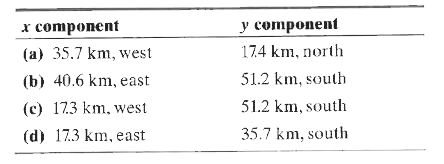According to Khan Sahib, the British Raj had begun from the station called :
Sarhad,
Shimla,
Kosi,
None of these.
The correct Answer is:A
Similar Questions
A street car moves rectilinearly from station A (here car stops) to the next station B (here also car stops) with an acceleration varying according to the law f=a−bx, where a and b are positive constants and x is the distance from station A. If the maximum distance between the two stations is x=Nab then find N.
View SolutionRead the sources given below and answer the questions that follows:
SOURCE – B: The Outbreak of the Revolution
In France of the Old Regime the monarch did not have the power to impose taxes according to his will alone. Rather he had to call a meeting of the Estates General which would then pass his proposals for new taxes. The Estates General was a political body to which the three estates sent their representatives. However, the monarch alone could decide when to call a meeting of this body. The last time it was done was in 1614.
Source B : What was the Estates General ?
View Solution
Knowledge Check
A street car moves rectilinearly from station A to the next station B with an acceleration varying according to the law f=a−bx, where a and b are constants and x is the distance from station A. The distance between the two stations & the maximum velocity are :
Ax=2ab,vmax=a√bBx=b2a,vmax=abCx=a2b,vmax=b√aDx=ab,vmax=√abA boat radioed a distress call to a Coast Guard station. At the time of the call, a vector A from the station to the boat had a magnitude of 45.0 km and was directed 15.0∘ east of north. A vector from the station to the point where the boat was later found is B=30.0km15.0∘ north of east.
How far did the boat travel from the point where the distress call was made to the point where the boat was found ? In other words, what is the magnitude of vector C ?A64.3kmB39.7kmC26.5kmD54.0kmA street car moves rectilinearly from station A to the next station B (from rest to rest) with an acceleration varying according to the law f=a−bx, where a and b are constants and x is the distance from station A. The distance between the two stations and the maximum velocity are
Ax=2ab,vmax=a√bBx=a2b,vmax=abCx=a2b,vmax=b√aDx=ab,vmax=√ab
A boat radioed a distress call to a Coast Guard station. At the time of the call, a vector A from the station to the boat had a magnitude of 45.0 km and was directed 15.0∘ east of north. A vector from the station to the point where the boat was later found is B=30.0km15.0∘ north of east.
What are the components of the vector from the point where the distress call was made to the point where the boat was found? In other words, what are the components of vector C=B−A?
View SolutionA street car moves rectilinearly from station A to the next station B (from rest to rest) with an acceleration varying according to the law f=a−bx, where a and b are constants and x is the distance from station A. The distance between the two stations and the maximum velocity are
View SolutionAccording to a FIR in police station, car A was at rest waiting for a red light at a crossing when it was hit by similar car B from rear side. Both cars had then hard brekes on, and from their skid marks it is surmiesed that they skidded together about 8m in the original direction of travel before coming to rest. Assuming a stopping force of about 0.4 times the combined weights of the cars. the speed of car B just before the collision is approximately [g=10m/s2]
View SolutionAccording to initial theory, the heat was considered as fluid called ‘Caloric’. The caloric fluid flow from
View SolutionAccording to a FIR in police station, car A was at rest waiting for a red light at a crossing when it was hit by similar car B from rear side. Both cars had then hard brekes on, and from their skid marks it is surmiesed that they skidded together about 8m in the original direction of travel before coming to rest. Assuming a stopping force of about 0.4 times the combined weights of the cars. the speed of car B just before the collision is approximately [g=10m/s2]
View Solution
